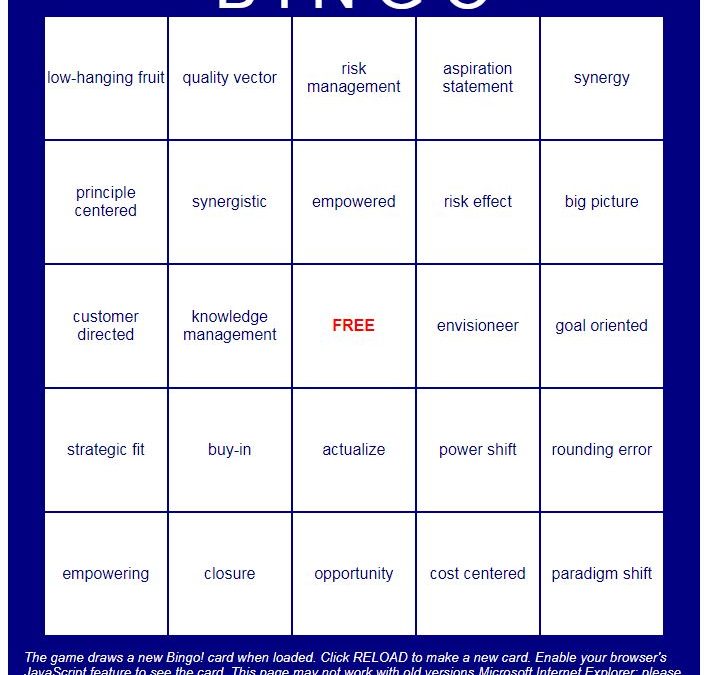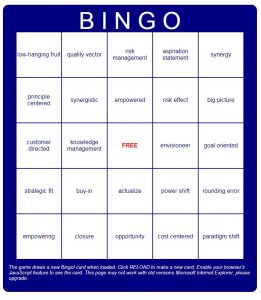
by Philip Anast | Sep 27, 2017 | Blog
As we strive to be better communicators and storytellers, it often helps to get out of our comfort zones and read inspirational literature that can teach us new things. We often find those types of books in classical literature, or from the latest fiction and non-fiction books. Sometimes, “How-to” guides also help.
That happened to me recently when I picked up the book, “A Mind for Numbers: How to Excel at Math and Science (Even if You Flunked Algebra).” You may be asking yourself, “Why would a PR guy be reading a book about math and science?” Isn’t the reason you pursued journalism and then PR in the first place is that you stunk in those other areas?
Well, as it turns out, author Barbara Oakley, Ph.D., did, too. But through a gradual retraining of her brain, she earned a Ph.D. in systems engineering after completing bachelor’s and master’s degrees in Electrical Engineering, and Electrical and Computer Engineering, respectively. She now teaches engineering at Oakland University in Detroit, and is a leading educator in the area of STEM education.
While her book is primarily geared toward helping high school and college students successfully navigate the aforementioned disciplines, it’s ultimately a guide to improving skills and techniques for learning how to learn. And that can be useful for people in any profession, including PR.
Two modes of thinking
For instance, Oakley describes the two modes of thinking: the focused and diffuse.
The focused mode is like the flashlight setting that casts a bright light in a narrow area. It’s a direct approach to solving problems that requires rational, analytic and sequential ways of thinking. When we’re working intently on a project, like writing a white paper or drafting a PR plan/strategy, we use the focused mode of thinking.
But the diffuse mode also plays an important role in those projects. It taps other parts of the brain and is akin to turning your flashlight setting to casting a wider yet less powerful light. As its name suggests, the diffuse mode is wider and big picture. It’s a resting state in our brains. It works quietly in the background and allows us to form new insights. It kicks in when our minds wander, or when we take a break from a focused task to walk, jog, listen to music, sleep or play video games.
Oakley’s point, backed by the hundreds of research studies that inform her book, is that we must maximize both types of thinking to learn and tackle problems.
If we’re working on a specific assignment, it’s important to step away from that work at intervals to allow the diffuse mode to enter the picture. By pursuing a leisure activity or working on some other job assignment, we allow our diffuse mode of thinking to continue working on the first task at hand and lend new insights. The diffuse mode opens up possibilities that we may not have considered in the focused mode and prevents us from believing that only one approach to a project is the single way of accomplishing it.
Taking a better approach
Here are some other practical tips that I gleaned from the book that we can translate to our own profession and help us do our jobs better:
- Avoid procrastination because it prevents the diffuse mode from helping a project or media campaign. While the luxury of time is not always possible in our profession, especially in crisis communication situations, building a timetable of assignments and deadlines, with thoughtful consideration, can help improve the overall response and results.
- Don’t cram to memorize a speech or the big PR plan presentation in one day. Rehearse and study over a series of days and/or weeks. Research shows that we retain the material better, avoid reading the screen verbatim, and make more genuine presentations.
- Avoid reading literature or meeting notes over and over again to learn the material. Instead, use a technique called “pause and recall,” i.e., turn away from the literature and notes after each page or several pages, and describe the concept in one’s own words; that’s the way we build chunks that form strong neural connections in long-term memory.
- Take a 21-minute nap to refresh the brain (but don’t tell the boss). The brain’s neural networks need to be reset from time-to-time, which freshens our outlooks toward problem-solving
- “Lady Luck favors those who try.” Sometimes, we feel downtrodden if a media pitch fails to elicit that desired interview, for example. Perhaps it’s time to let the diffuse mode help; alternatively, we could pick up the phone, be persistent (within reason), and converse with that target reporter directly. In my experience, with professionalism and respect for the journalist on the other end, the odds are good.
As in any learning endeavor, Dr. Oakley’s observation rings true: “The better I got (at math), the more I enjoyed what I was doing. And the more I enjoyed what I was doing, the more time I spent on it.”

by Ken Krause | Sep 20, 2017 | Blog
Having worked across a number of industries during my career, I feel pretty safe in saying no industry loves it jargon (and acronyms) like healthcare. The general technology industry probably comes in a close second, but for pure technical mumbo-jumbo you can’t beat healthcare.
Part of it, I think, is that the healthcare industry is filled with a lot of smart people. Because of that, everyone feels like they have to sound like the infamous “smartest person in the room.” So they load up their content or their speeches or even their everyday conversations with a lot of jargon designed to give that impression.
Nowhere does that become more apparent than when I go to check the website of a new client or prospect to start familiarizing myself with their business. I can’t tell you how many times I’ve come away after reading page upon page asking “But what do you do?”
Yes, you’re open and interoperable. Yes you follow evidence-based best practices. Yes, your methodology is transformative and sustainable. Yes, your subject matter experts have a wealth of experience in solving the toughest problems facing the industry. But again, what do you do?
If I, who has an employment-based incentive for comprehending your inscrutable jargon can’t figure out what you’re trying to say, what do you think happens to the typical prospect doing a fly-by? They see a bunch of words and terms they’ve heard 100 times before. They try to determine if they’re in the right place, looking at the right company.
But if it doesn’t come to them immediately, odds are they just move on. You lose.
Keep it simple
You’ve probably heard this quote, often erroneously attributed to Albert Einstein: If you can’t explain it simply, you don’t understand it well enough. Ol Al may not have said it, but there is a lot of truth to it nonetheless.
I know this from personal experience. Thanks to my work here at Amendola Communications, I have had the opportunity to speak with some incredibly smart, accomplished people. They are the kind of people who are leading all of healthcare toward amazing new discoveries and ways of working.
While they come from different backgrounds and have expertise in very different areas, the one trait they all had in common was their ability to get their point across in a way that the average person could understand.
Some were talking about advanced analytics and machine learning. Some were talking about the nuances of health insurance. Some were literally talking about curing cancer. But you never walked away from the conversation wonder what the H-E-double hockey sticks they were talking about.
Instead, you walked away energized and inspired. Not to mention excited about the possibilities for the future and how their companies were creating them.
Learning to speak/write plainly
Becoming a clear communicator like that isn’t easy. It actually takes a lot of work to make your communication sound effortless yet on-target.
The first step, quite honestly, is not being afraid that people won’t think you’re smart if you don’t pack your content or your spoken words with industry jargon. In business there are no points awarded simply because you sound “smarter” than everyone else. The money goes to the people who show they understand the problem and how to solve it.
Once you’ve bought into that philosophy, start looking through your current content, perhaps with a Business Buzzwords Bingo card in hand. If you find you are winning within the first three paragraphs of a piece of content, especially your company website, you know you have some work to do.
paragraphs of a piece of content, especially your company website, you know you have some work to do.
Now listen to speeches from great communicators or read materials from a technically sophisticated consumer product. Whether you were a fan of Ronald Reagan’s or not, the man knew how to sell an entire nation on a concept. Is what you’re doing any different? Or as my colleague Michelle Noteboom points out, see how Donald Trump approaches the same challenge. You may not like what he says, but you must admit he has a way of stating his positions simply.
Car companies, especially the high-end ones, offer a great example of plain speaking. Even when they’re talking technical specs, they do it in a way that focuses on why you should care.
Apple has always had a good handle on that as well. While everyone else in the industry was talking about jitter rates and Hz-related info, they were telling how you could get 1,000 songs in your pocket. Everyone can understand that.
There’s the key. It’s not about the bells and whistles in your product. No one cares how much effort you had to go through to develop it. That’s your problem.
What they want to know is what’s in it for them. The easier you make it to understand that, the more intrigued they will be.
Read my lips: no more jargon
Well, very little anyway. It is healthcare, after all, and there are technical terms that must be used at times. But if you try to ensure that any jargon you use is essential to explaining your position, and that there’s no other way to say it, you’ll likely find prospects staying longer and going deeper on your website. And more willing to engage with you all the way to a sale.

by Brandon Glenn | Sep 13, 2017 | Blog
Admit it, reporters and editors: Many of you are a little curious to learn about tips for journalists considering a career in public relations, or at least you have been at some point.
That’s OK. No one could blame you and you’ve got plenty of reasons:
- Newspapers have hemorrhaged so many jobs over the last 10 years that a major industry trade group threw in the towel on tracking job losses.
- Before you say, “Everyone knows newspapers have been bleeding jobs, but that’s been offset by growth at digital publishers,” consider one factor: That statement isn’t true. Hiring at digital media outlets “pales in comparison to the number of journalists laid off in the newspaper industry,” according to Columbia Journalism Review.
- The occupation “desktop publisher” (sounds a lot like a journalist to me) appears on the U.S. Bureau of Labor Statistics list of fastest-declining occupations between 2014 and 2024, along with telephone operators, mail carriers, sewing machine operators and a lot of other occupations that aren’t very appealing to young people.
- Most disturbing, perhaps, is the absolute dominance of Facebook and Google in the advertising market. Between 2012 and 2016, the two giants alone accounted for 70 percent of the growth of ALL advertising revenues, a figure which is inclusive of radio and TV ads. If we focus only on the U.S. digital advertising, the numbers are even more bleak: Last year, Google and Facebook accounted for an “astounding” 99 percent of the growth in that market last year.
- Further, with Facebook and Google controlling 65 percent of new digital ad revenues, don’t expect a big surge in hiring from other digital publishers any time soon.
No doubt, it’s hard out there for a journalist. So, naturally, you may be thinking about transitioning to a new career that builds on many of the skills you’ve developed as a reporter and editor writing, interviewing, editing, researching and the like. Lots of us have been there.
I spent nearly a decade in journalism, and worked in corporate communications and public relations for about the last four years. As someone who has seen how the sausage is made on both sides of the industry, I offer the following thoughts, observations and tips for journalists who are interested in a career in public relations.
Continue to think like a journalist: That’s not to say that after starting in PR you need to think exactly like you did as a journalist. Once you acquire more PR experience you’ll have an advantage over others in the field: You’ll have the ability to think both as a journalist and PR professional. Your guidance on what does or does not capture media interest will serve you very well with clients, who typically have a wealth of knowledge and experience in their own industry and are anxious to learn how journalists work.
Become more client-focused: Journalist are a bit like a lone wolf: Largely self-reliant and able to chart their own course to find the nourishment they need to survive. For journalists that nourishment comes in the form of stories that will attract readers and clicks (“publish or perish,” after all). Corporate culture is a bit of change from that, and in many cases, the change is positive. You’ll actually get to work as part of a team rather than primarily writing articles by yourself although that cooperation with and reliance on others may take some getting used to at first.
Another difference is the number of approvers. In journalism, it’s essentially you and your editor. In PR, there is your internal team, and there is the client team, which often includes members of the marketing department as well as individual subject matter experts. Everyone in the process brings their own perspective, which may not always align with what you may have been taught in journalism school. That’s ok, though. It helps you expand your universe and the ways you can communicate.
Stress out less about deadlines: No matter the profession they’re in, everyone seems to think that they’re faced with constant deadline pressures and always rushing to get to the next task, whatever that task may be. However, in my own experience from working in journalism and with corporations, corporate deadlines are usually longer than “today” (unlike journalism), and are more likely to get pushed back when needed. Why might this be? I suspect it comes down to organizational focus. A media outlet or publishing company is in the business of publishing news. Articles are the “widgets” that these companies produce to pull in revenues from advertisers.
For corporations that are clients of PR firms, publishing content is not their primary focus. The content is part of a larger plan with many moving parts. In other words, content isn’t the “widget;” it’s support for the widget, which means content deadlines are dependent on when the widget is ready. Further, corporations typically have more layers of approval that any given piece of content must pass through before seeing the light of day.
Get used to being the pursuer, instead of the one being pursued: As a journalist, PR professionals are constantly vying for your attention, all looking to obtain media coverage for their clients. It’s ok to confess that that felt good sometimes. Well, forget about that feeling. In PR, the tables have turned and you may be expected at times to pursue inexperienced journalists from small media outlets who nonetheless aren’t particularly interested in what you have to say at the moment. If your ego can’t handle that (not to mention lots of your pitches being met with rejection or indifference) PR probably isn’t the best field for you.
Maintain your journalism contacts: Attending a conference or other gathering with a number of fellow journalists? Grab some business cards not only from potential sources you’ll be writing about, but from other reporters, too. Those journalist contacts you make will serve you very well in public relations, and because they’ve seen you as one of themselves, they may respect you a bit more when you’re pitching or sharing story ideas.
Confession time – this is one area where I fell short as a reporter. When I attended conferences, I was so preoccupied with building my network of sources and finding stories that I neglected to interact as much as I should have with journalists – aside from the times we spent together sitting in the press area. So take a step back from your articles, interviews and research and spend some time getting to know the reporters you’re working shoulder-to-shoulder with. If and when you join a PR firm, you’ll be glad you did because you’ll have a pre-built, solid network of journalist contacts the first day you walk in the door. And that’s invaluable to the clients who are depending on you to get their stories told.
These are just one ex-reporter’s tips for journalists considering a career in public relations. There are many paths to PR, and journalism is but one. Regardless of how you come to PR and how you obtain the necessary skills, the abilities that journalism cultivates – writing, interviewing, editing, researching will play a critical role in your success.

by Todd Stein | Sep 6, 2017 | Blog
Most of us are our own worst critics. It’s easy to understand why. After all, no one knows us better than us. Who better to uncover and critique all our foibles, follies and failures than our own inner critic?
There’s a fine line, of course, between self-criticism and self-awareness. Maturity requires that we view ourselves with objectivity and correct those faults that can be corrected. The kind of criticism that comes of self-awareness and that leads to self-improvement is a prerequisite for happiness and love.
But when it comes to work, self-criticism can be crippling. Carl Richards, a certified financial planner, author, and regular New York Times contributor, makes that point in his fine article for the Times, “Free Yourself of Your Harshest Critic, and Plow Ahead.” Richards argues that we accomplish much of our best work when we stop critiquing and just do it.
“Think of how liberating it would be to free yourself from the role of being your own harshest critic,” he writes. What might happen if you took all the energy that goes in to judging your work and put it right back into the wellspring of creating the work instead?”
Writer’s Block
Richards article mainly concerns writing, and the common experience of writer’s block. But he notes that letting go of your inner critic is good advice for “anything meaningful you do. Singing, painting, entrepreneurship, giving financial advice, museum curating, boat building, skiing, whatever.”
Like Richards, my own experience with the shadow side of criticism concerns writing. I was a journalist for 15 years before tackling PR. Most days, my livelihood, to say nothing of my self-esteem, depended on my ability to crank out large amounts of decent copy on deadline. As a newspaper reporter with daily deadlines you either get over writer’s block or you get out. There’s no time for self-criticism when they’re holding the front page for your story.
It was after I left newspapers to become a freelance magazine writer that my self-criticism blossomed. I blame my editors. I learned shortly after starting to freelance that deadlines mean something very different for magazine editors than for newspaper editors. Magazine editors give their freelancers early deadlines, days or weeks before they intend to actually edit the article. They do that to guard against precisely the sort of writer’s block that often crippled me.
Yet, ironically, it was because I knew that my deadlines were fake and therefor moveable that my self-criticism could work its evil. With several days to write, no beginning was ever clever enough. Writing is rewriting, as every good writer knows. But when you reach the hundredth rewrite of your lede, you know you’re in trouble.
The Godfather of Gonzo
I’m reminded of the story of Rolling Stone Books editor Alan Rinzler who, in trying to wrangle the manuscript for Fear and Loathing on the Campaign Trail out of legendary procrastinator Hunter S. Thompson, ended up chasing the godfather of gonzo journalism around a hotel room for 48 hours with a tape recorder in hand. Unable to write, Thompson literally dictated the bestseller.
I never reached that point. What saved me, every time, was a deadline. Faced with no alternative but to produce, the words flowed. In the end, I simply lowered my standards and trusted that what came out of my experience and craft would be good enough.
In his article, Richards quotes a letter from reader Chip Scanlon. Scanlon, a writer himself, recounted how he overcame writer’s block: “I do my best to not have any standards at all. I abandon my standards. I urge myself to write badly, and once I do that my fingers begin to fly, and the inner critic is powerless.”
Does your inner critic ever keep you from completing work? How do you overcome it?

by Jodi Amendola | Aug 23, 2017 | Blog
Last month was atypical for sure. I had two clients call and ask me, “How can we be a better client?” Wow! In all of my years in public relations & marketing, I don’t believe that has ever happened before.
One of the clients actually said, “You’ve always been there for us and have done a great job. I know we are the bottleneck right now. We’ve got to be a better client.”
The second client said he was pleasantly surprised at how much we have accomplished since launching our program, was delighted with the traction and volume, and most definitely wanted to sustain it. He added, “But the last thing we want is to be a difficult client!”
Obviously the Universe is hinting it’s time for a list of tips on being a fantastic client but first, let me underscore how essential it is to partner with a compatible PR agency. I’ve noted before that selecting a PR agency is much like selecting a spouse. For a solid relationship going forward, be sure the foundation rests on good, open, honest communication.
Which leads to my first tip
Have a dedicated Liaison. Having someone on your team who is responsive to deadlines and requests for interviews and information is paramount to our success. If we uncover a media interview, chances are the editor will want to interview your executive or client that day or that week. We need our liaison to respond with availability so we can firm up the interview and prep all parties. Email, phone, text is fine just someone who responds in a timely fashion.
Available/Engaged company and client spokespeople. It is so helpful when the passion, enthusiasm and commitment comes from the top. The positive energy will trickle down. In addition, access to thought leaders helps to shape messaging, priorities and sets the tone for the entire program. We can be more successful when we have ongoing information and communication from your team’s visionaries. On a related note, be sure your company is actually cultivating thought leaders.
Treat us like a member of your team. We are family now, right? We view ourselves as an extension of your team and would like to be in the know on what’s going on. Keep us informed and be transparent. Share your ideas, corporate initiatives, new customers gained, upcoming events, marketing campaigns, and important timelines. Keep the line of communication open and remember, it flows both ways. So ask us for advice, or run ideas by us we love to collaborate with our clients! Please invite us to talk to your internal stakeholders, especially those in product strategy, sales and other key team members. We appreciate consistent, open communications about the company’s business activities, developments, successes, and milestones.
Prep before your media/analyst interviews. We will do our part to arrange a prep for your interviews but please come prepared. We’re here to help with that, too.
Communicate, Communicate, Communicate Communication is the foundation to any relationship. If you are too busy to respond, let us know. If you are going to be out of the office, let us know. If you need extra support because your biggest trade show is coming up, call us NOW. There is no smarter way to leverage an expensive investment in tradeshows than through public relations. If you love our writing, let us know a little positive feedback goes a long way! By the same token if you don’t like the writing style, let us know we have multiple writers and can quickly make a switch. Lastly, we appreciate hearing (and acting!) on your interesting, timely observations, insights and thoughts on industry trends and developments.
Be open to feedback on positioning and strategy for media relations and thought leadership. You are hiring us to provide you with strategic guidance and counsel. You are hiring us for our expertise. And you deserve honesty. We have a great sense for what is newsworthy, what messages resonate and generally what works/what doesn’t. We are not shy. If you are open to it, we will tell you what we really think so ask away!
Set realistic deadlines. In our world, we are used to dealing with fire drills. Everyone wants everything yesterday. However, if you really don’t need the press release by the end of the day, then give us the proper time that is needed to give you something that is top notch.
Bring your positive attitude/energy. PR is one of the most exciting aspects of doing business. We love what we do, especially when we get to work with collaborative, upbeat people. It’s a close relationship, so let’s get comfortable, roll-up our sleeves, and do great things together!

by Matt Schlossberg | Aug 16, 2017 | Blog
Traditionally, B2B healthcare marketing shops design their campaigns to cast a very wide net, seeking to get their companies solutions in front of as many potential customers as possible. Today, more marketing teams are considering a much more concentrated alternative account-based marketing (ABM). The automation software company Marketo defines ABM as a strategy that “concentrates sales and marketing resources on a clearly defined set of target accounts within a market and employs personalized campaigns designed to resonate with each account.”
Rather than target “hospitals and health systems,” ABM marketers identify specific provider organizations the Cleveland Clinic or Intermountain Healthcare, for example as markets of one. In other words, rather than organizing marketing and PR efforts around such broad areas as industry, product or channel, ABM harnesses those efforts and customizes them for individual accounts.
According to SiriusDecisons, 92% of B2B marketers worldwide say that ABM is “extremely” or “very” important to their overall marketing efforts. And more than 70% of those respondents say their ABM budgets will grow this year. According to the analyst firm Forrester, only 0.75% of generated leads become closed revenue using traditional marketing tactics.
While ABM has seen expanding influence in increasingly commoditized industries, there is evidence that ABM could enjoy widespread application. So what are the advantages of ABM over traditional marketing campaigns?
- Alignment. Companies can unify their marketing, sales, public relations and implementation teams around an account’s buyer journey from online research to purchase to brand advocacy and loyalty and work from the same set of goals and metrics.
- Analytics. Marketing has become much more customized in the era of machine learning and digital commerce. By leveraging research and analytics to individual accounts, engaging with those customers through highly customized campaigns, and making evidence-based adjustments to strategies and tactics based on data, healthcare companies can develop more focused lead-gen programs than funneling potential leads from a broader audience to the sales team.
- Adaptability. ABM complements other marketing strategies, such as inbound marketing. For example, both ABM and inbound marketing rely on personalized strategies that push value over products.
Getting Started with ABM
ABM does require front-end research and developing a methodology for identifying potential accounts, including company size, location and annual revenue, market influence, etc.
It also requires sales and marketing teams to get together to discuss the ABM framework that includes corporate marketing activities, account-specific communications, and detailed research into not just the target organization but also its key players, influencers and decision-makers.
Once the target research has been completed, the next task is creating the customized content for outreach. It’s important to remember at this juncture that you are not marketing for a broad audience. Speaking to generalized pain points won’t work. Use your research into each account to create content that meets that specific target where they are.
With content in the hopper, the next big decision is choosing the right channels of distribution. Your research into the target organization and its primary influencers should shed some light on which digital and social platforms will best bring your message to the potential client.
Once the campaign is up and running, measuring the success of your campaign is critical. And that can be trickier than you think. The ROI of ABM uses a mix of qualitative and quantitative measures. For example, is your list of decision-makers and influencers within a target account growing? Has there been an uptick in engagement from the account? Has revenue increased for specific accounts?
ABM is a perfect-storm mix of art and science. However, well executed, this species of marketing can help break silos between corporate sales and communication, engender greater loyalty and interest from customers, and help your organization better meet the needs of clients.






